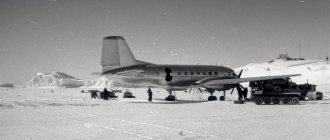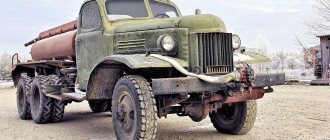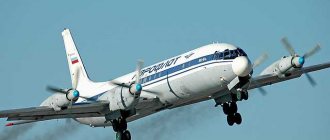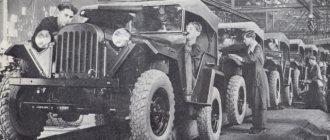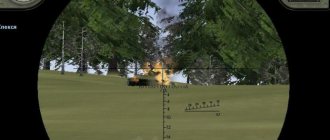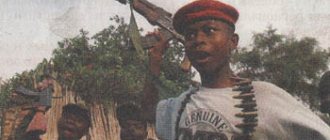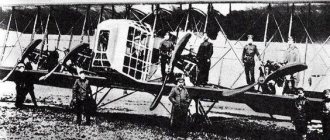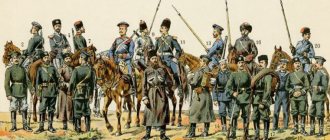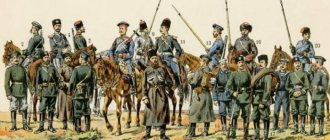Supertesters are already testing fundamentally new heavy tanks for the French nation. The branch will be incomplete, and will start only from the 8th level. Unlike the French tanks that are familiar to most players, the new vehicles will be well protected and armed with conventional guns without a magazine loading system. So, let's begin our preliminary acquaintance.
French heavy tanks have long become a household name in the random fields. In terms of their combat characteristics, these are maneuverable and dynamic vehicles with incredible firepower due to the installed guns with a drum loading mechanism. However, this technique has two significant disadvantages:
- Lack of armor. A direct hit from artillery becomes fatal: internal modules are damaged and the crew is injured.
- Recharge time. Recharging the drum takes at least 40 seconds and during this time, the car turns into a hunted hare hiding from hunters.
Taking these features into account, the developers are introducing an alternative development branch into the game, which will consist of three cars. Significant changes are envisaged here in terms of security and available weapons.
Don’t be surprised, but now the “French” will be able to tank, while the developers have retained all the positive parameters in terms of maneuverability and dynamics.
In addition, each tank can be equipped with two types of guns, choosing between high one-time damage and rate of fire. The first in the alternative branch will be the AMX 65t, a tier 8 heavy tank. This is a kind of transitional option that will help you better adapt to the game on new machines.
Currently, the equipment is undergoing testing and will appear in the game with the release of update 9. 21. We suggest that you familiarize yourself with the main parameters and combat capabilities of the AMX 65t in order to better understand the feasibility of introducing an alternative branch in the game.
Here we will have the AMX 65t, a level 8 pumpable heavy tank in the French research tree. The crew consists of 4 people, detailed characteristics and armor values are in front of you.
- Historical facts of the AMX 65t
- AMX 65t Performance characteristics
- Equipment for AMX 65t
- AMX 65t crew skills
- How to play on AMX 65t?
- AMX 65t armor
- Brief summary of the AMX 65t
- Video AMX 65t
AMX 65t Performance characteristics
Let's start the AMX 65t guide with the main characteristics that affect the survivability of the tank on the virtual battlefield. The first thing you should pay attention to is the safety margin. The vehicle received 1,400 XP, which is lower than most of its classmates.
In addition, the “Frenchman” was awarded a rather modest review of 360 meters. Let us remember that we are talking about a heavy tank, which rarely plays on its vision, but sometimes farsightedness greatly helps in battles, giving the right to the first shot.
In terms of dynamics and mobility, things are simply great, so a newcomer will not deviate from the general concept of the development branch. The weight of the equipment is not small: 65 tons, however, a powerful engine with 1,000 “horses” is installed here. This helps to quickly reach the maximum possible 40 km/h and move in reverse at a speed of 20 km/h.
At the same time, the chassis resistance leaves much to be desired, so the car will greatly lose speed on inclines and difficult terrain. The turning speed of the caterpillar part is also lame: 25 degrees per second. The tank cannot be called clumsy, but it can still be turned.
In addition, the car has bulky dimensions, so it is almost impossible to hide in the bushes. The stealth coefficient of stationary equipment is only 6.8%, provided that it is in a static state. Therefore, those who like to play PT will be deeply disappointed.
We smoothly move on to weapons. As already mentioned, players are offered 2 types of guns to choose from, so everyone chooses which barrel to use at random. The available tools have different characteristics and therefore require a more detailed consideration.
The first barrel is a 100mm SA47 gun.
AMX 65t TTX elite
Gun - 100 mm SA47
VIII level
| 6,12 | Rate of fire (rounds/min) |
| 232/263/50 | Average armor penetration (mm) |
| 300/300/400 | Average damage (units) |
| 1837 | Average damage per minute (units/min) |
| 0,34 | Spread at 100 m |
| 3,2 | Mixing time (s) |
| 3000 | Weight (kg) |
Which is declared top at level 8. Here we are offered armor penetration with an armor-piercing projectile of 232 millimeters, and by loading gold, you can increase this parameter to 263 mm.
In principle, it looks quite decent, but even a sub-caliber projectile may not be enough to penetrate the frontal armor of level 10 opponents. One-time damage is 300 units, which, taking into account the reload time of 9.3 seconds, gives a DPM of about 1,800. Note that the weapon is quite accurate: the dispersion radius is 0.34 per 100 meters. The barrel is reduced in 3 seconds.
The second gun is the 120mm D. 1203 .
AMX 65t TTX normal
Gun - 120 mm D. 1203
X level
| 4,35 | Rate of fire (rounds/min) |
| 218/325/65 | Average armor penetration (mm) |
| 400/400/515 | Average damage (units) |
| 1739 | Average damage per minute (units/min) |
| 0,36 | Spread at 100 m |
| 2,7 | Mixing time (s) |
| 3580 | Weight (kg) |
Let’s immediately clarify that by choosing it, we will lose in rate of fire and accuracy. Here the spread is already 0.36, so you will have to forget about comfortable shooting at long distances. Moreover, the gun will reload in 13.8 seconds, which reduces the DPM to 1,700 units.
The ability to penetrate someone else's armor with an armor-piercing projectile is also lost: 218 mm. Note that the developers decided to sweeten the pill by making armor penetration 325 millimeters with gold ammunition (shudder tens!). At first glance, this weapon is inferior to the previous one, but this is not so. We get 400 units of damage and a more comfortable aiming time of 2.5 seconds.
The negative angle of the barrel is 8 degrees, which allows you to intelligently inflict damage on the enemy using the relief of open maps. Let us clarify that the AMX 65t wot feels good in any configuration, and the choice between alpha and DPM is left to the player’s discretion.
Equipment for AMX 65t
Despite the full package of positive characteristics, the “French” needs some modernization. This is especially true for visibility and rate of fire. Of course, you can hope that the new technique will be upgraded in the next update, but you shouldn’t count on such favor.
It will be much more effective to select additional equipment that will help cover up existing shortcomings and enhance the positive aspects.
We recommend trying this kit:
- The rammer is a mandatory choice for all heavies, previously unavailable to the “French” above level 8 (not installed on guns with a drum loading mechanism).
- Reinforced aiming drives - an extra plus to accuracy is never superfluous.
- Ventilation – we get additional bonuses to all characteristics.
If you have managed to perform well in ranked battles and earned a sufficient number of bonds, it makes sense to install improved analogues.
We remind you that these are only our recommendations: you can listen to them or try your own set of modules. Please note that the camouflage net will uselessly occupy the slot: it will not increase the stealth parameters.
Coated optics are also not suitable for everyone: heavy tanks usually engage in close combat, so the viewing radius does not play a decisive role here. The only adequate replacement for ventilation is anti-fragmentation lining, which will help partially neutralize the damage that will be caused by artillery hits.
Why and how the T-64, T-72, T-80 tanks appeared. Part 1
The history of Soviet tank building includes complex and controversial processes, with ups and serious downs. One of these pages is the very complex history of the development and formation of the T-64 tank and the creation of the T-72 and T-80 tanks on its basis. There is a lot of speculation, opportunistic statements and distortions of facts and circumstances surrounding this.
At that stage, a truly revolutionary tank was born, which determined the development of Soviet tank building for decades to come. Historical justice requires an objective consideration of the process of creating these tanks. Moreover, when out of three competing design bureaus in Russia there is only one left, objectivity is sometimes sacrificed for the sake of market conditions.
The history of the creation of these tanks covers a huge period in Soviet tank building, it’s scary to think - more than 50 years! From the approval of tactical and technical requirements in 1955 to the start of development of the Armata tank. An entire era through which thousands of designers, scientists, military, government and political figures of various levels passed.
I had to be a participant in these events in the period from 1972 to 1996 and went through the path at KMDB from a young specialist to one of the project managers of the last Soviet tank “Boxer”. Something passed through me directly, I learned something from colleagues, from the stories and memories of designers, ministerial officials and military personnel with whom I worked for almost a quarter of a century. And I learned something decades later from memoirs.
The history of these tanks cannot be considered in isolation from their developers and the struggle of different schools of tank building, where there was both fair competition and lobbying and the use of levers of power structures. Be that as it may, tanks were born, and people in each design bureau fought and defended not their personal interests, but the ideas and concepts of tanks and sought to bring them to life.
When assessing tanks, it is necessary to take into account the requirements placed on them at that time, and not look from the perspective of today. Moreover, do not consider as the ultimate truth the assessment of specialists such as Kartsev or Kostenko, which is far from always objective and taken out of context, but objectively consider all the processes of creating these tanks, their advantages and disadvantages.
Soviet tank building originated in Leningrad. The first tank building school appeared there before the war, at the Leningrad Kirov Plant (LKZ). Then a second school was formed in Kharkov, at the Kharkov Mechanical Engineering Design Bureau (KMDB) and after the war - a third, at the Ural Carriage Works (UVZ). For ease of presentation, these names are retained below.
In Leningrad they started with the T-26 light tank, then relied on the T-35 heavy tanks, the KV and IS series, and ended with the T-10 heavy tank. In Kharkov, the line of light tanks of the BT series was first launched, then Koshkin’s initiative for the T-34 medium tank was implemented, and then, with the participation of UVZ, the line of T-44 and T-54 tanks was implemented.
Before the war, Nizhny Tagil did not have its own tank school. The Kharkov Design Bureau was evacuated there in 1941, and for almost 10 years (until 1951) design bureau employees led by Morozov had to work there. In the early 70s, I had to talk to some of them and they told me how difficult it was for them to live away from home. I still don’t understand why they were kept in evacuation for so long.
The Kharkov Design Bureau in Nizhny Tagil continued to improve the T-34 and the T-34-85 modification appeared there. No one has ever denied this, but the tank itself was created in a different place and at a different time.
After the departure of Morozov and a group of leading designers to Kharkov, the design bureau in Nizhny Tagil survived, continued to improve the T-54 tank and developed the following modifications: T-55 and T-62. Thus, the Urals began to form their own school of tank building.
This is how three schools of tank building competed with each other, each of which put forward its own version of creating the T-64, T-72 and T-80 tanks. One may ask the question: was it justified or not to maintain three powerful design bureaus in the country developing practically the same machines? This probably made sense; they were formed in the process of tank building development. At the same time, there were costs and unreasonable expenses, but in the end this contributed to the creation of unique examples of military equipment.
Each design bureau defended its own point of view on the concept of the tank and sought to make the tank better and naturally outperform its competitors. Now there is only one design bureau left in Nizhny Tagil, which has no alternative. VNIITransmash, which we called the “anti-tank” institute, was also closed. He was an independent arbiter, although he did not always live up to this. Still, there must be competition; it stimulates design thought.
I went through the KMDB school and I would like to immediately note that I have never defended and do not intend to defend “Ukrainian tank building.” To confirm my words, I will give a quote from my book, which I wrote in 2009: “For me, the Soviet Union and Russia have always been words with a capital letter, and Ukraine is just an empty phrase that means nothing to me... All my actions in subsequent years are aimed were to fight for the restoration of historical justice, in which the history of tank building in my native design bureau is not the history of Ukraine, but belongs to all of us who worked in different republics under the leadership of Moscow.”
In this regard, the history of tank building, no matter how much we argue and sort things out among ourselves, is our common history, we created it and must objectively evaluate the facts and events that took place. Today, for many objective reasons, KMDB cannot develop promising tanks, but its contribution to the common cause is undoubted.
Almost all tanks were born not by order from above, but from the proactive work of a specific design bureau. This was the case with the T-34, and the T-64 was created in the same way. At the same time, a lot depended on the personality of the chief designer; it was he who determined what the future tank would be like. I had to work with three chief designers and I can compare and evaluate their activities. Morozov was a genius, the creation of tanks was the meaning of his life. Koshkin was the same genius, who, by the way, came to Kharkov from Leningrad.
I can assume that if Morozov had not returned from evacuation, the T-64 tank would have been born not in Kharkov, but in Nizhny Tagil. Such people knew and were able to form teams capable of creating masterpieces of design thought. You can also give the example of Korolev, thanks to whose genius and organizational talent Soviet space was born.
The tank is created not only by the tank design bureau; under the leadership of the chief designer, dozens of design, scientific and production organizations of various profiles and purposes are working on it, without which it is impossible to create the vehicle. The engine, armor, weapons, ammunition, sighting systems, electronics and much more are being developed in specialized organizations. The head design bureau ties all this into a single whole and ensures that the specified characteristics are fulfilled.
In the mid-50s, the tendency to curtail work on light, medium and heavy tanks began to dominate in the Soviet Union and the concept of creating a single tank was adopted. The military is developing tactical and technical requirements for such a tank and its development is entrusted to the KMDB.
One may wonder: why did they choose this design bureau?
The Leningrad Design Bureau dealt with heavy tanks, and this was not its profile. Morozov began the development of a new medium tank on his own initiative while still in Nizhny Tagil. Returning to Kharkov in 1951, he continued this work (object 430). In Nizhny Tagil, the unfinished project was continued by the new chief designer Kartsev (object 140).
In two design bureaus, preliminary and technical designs were developed, which were reviewed by the CPSU Central Committee and the Council of Ministers. Based on the results of the review, in June 1955, technical specifications for a promising tank were developed, prototype tanks were manufactured, and tests were carried out in Kubinka in 1958.
Object 430 successfully passed the tests, but object 140 failed. Work on this tank was curtailed and UVZ concentrated its efforts on creating the T-55 and T-62 tanks. Despite successful tests, the 430 object was not put into service because it did not provide a significant increase in performance characteristics compared to the T-54 tank.
On an initiative basis, object 430 is fundamentally redesigned, a new smooth-bore 115-mm gun with separately loaded rounds is installed. Based on the results of consideration of this project, in February 1961, a resolution was adopted by the CPSU Central Committee and the Council of Ministers on the development of a new tank weighing 34 tons, with a 115 mm caliber gun, a loading mechanism and a crew of 3 people. Thus, the development of the T-64 tank (object 432) was launched; the implementation of the project was entrusted to the KMDB.
The T-64 tank was revolutionary at that time and became the founder of a new generation of Soviet tanks. There was a lot that was new in it, but the main ones were an automatic loader and a crew of 3 people, a chassis and a never-before-used engine. All these innovations became problems for this tank, and especially the engine, which led to the appearance of the T-72 and T-80 tanks.
To reduce the internal volume and weight of the tank, Morozov used a low, opposed two-stroke 5TDF diesel engine with a horizontal cylinder arrangement, specially designed for this tank. The use of this engine made it possible to create a low engine and transmission compartment with an ejection cooling system. Work on this engine began back in 1946 on the basis of the German aircraft engine Junkers Jumo 205.
The use of this engine entailed serious problems associated with its development in production. It was previously known that attempts by England and Japan to master this engine in production ended in failure. Nevertheless, the decision was made, and the development of such an engine was entrusted to Charomsky, a well-known specialist in the creation of aircraft engines.
At the Malyshev plant in 1955, a special design bureau for diesel engineering was created, Charomsky was appointed chief designer, and a plant was subsequently built to produce these engines.
To be continued…
AMX 65t crew skills
Even virtual tankers need to be trained, which will help make the tank more formidable and playable. The AMX 65t is a tank that carries 5 people under its improved armor, so it is better to research the perks in this order:
Note that it would be unwise to go into battle without loading up on combat consumables, therefore, we set first aid kits, repair kits and fire extinguishers to auto-replenishment. If silver allows, it is better to choose an automatic fire extinguishing agent: any delay in the event of a fire will reduce our modest safety margin.
Let us add that you should not completely abandon the fire extinguisher in favor of coffee and croissant, at least at first.
How to play on AMX 65t?
In general, the tactics of playing alternative “French” will now not differ from the behavior in battle of other heavyweights. We can go with the team to the city, where, by hiding the vulnerable VLD and showing only the turret, we will dismantle enemy tanks.
Now you can clinch with your classmates and even emerge victorious from these fights. However, you will have to flaunt your security only at the top of the list.
When getting into battle with “tens”, it is better to limit yourself to distance firefights, and, realizing the accuracy of the gun, distribute damage to enemies from the third line. Don’t forget that the vehicle has good speed, so if necessary it can perform the functions of a medium tank, quickly change the direction of attack and go to the rear to protect the base.
Heavy tanks
The main difference between all Soviet-made heavy tanks is that they have rational armor, powerful guns, and good mobility. However, there are also certain disadvantages. The rate of fire of the gun is low, the accuracy of the shot and the durability of the tank are also not very high. These qualities of the first Soviet heavy tanks led to the fact that the crew was forced to fight at medium, or even better, at close range.
AMX 65t armor
Let's get to the main thing - armor, which the French heavyweights are so lacking. So, the strongest part is the frontal projection of the turret: here you can see 250 millimeters, which is partially supplemented by a small gun mantlet.
However, this good picture is spoiled by a clearly visible “smile”, where the thickness of the armor plate does not exceed 120 mm. By the way, right below this semicircle there is a triangle where the armor is about 45 mm, but this already refers to the vulnerability of the hull.
By the way, the turret has a visor and a commander's cupola. Surprisingly, both elements are well protected, so classmates are unlikely to be able to penetrate these tasty targets.
The forehead of the hull is protected by an extensive 100-mm armor plate, made in the likeness of a pike's nose. There is a good slope here, however, even taking into account the reduction, it will not be difficult to penetrate the strand into this plane.
The sides of the hull and turret are protected by 80mm sheets, so if the tank is positioned correctly, damage can be tanked well. It is better not to turn the stern towards anyone: there is only 60 mm here.
The full armor values for a Tier 8 French tank are presented below:
Front view
Side view
View from the rear
Brief summary of the AMX 65t
In general, quite decent technology is being introduced into the game, but it has a number of serious drawbacks. Positive parameters include:
- Frontal reservation.
- Combat potential.
- Speed.
- Relatively good accuracy.
- UVN
Flaws:
- A large number of vulnerable areas.
- Small viewing radius.
- Rate of fire.
- Maneuverability.
- Tall silhouette.
Instead of a conclusion, we will add that the given characteristics are not final, therefore they may change before the update is released. Preliminary analysis shows that the technology is a strong “middle-class”, but after it more formidable machines await us.
Objectives of the USSR
On July 15, 1929, a decree of the Central Committee of the Military-Industrial Complex (b) “On the state of defense of the USSR” was issued. The tasks set for the industry included not only the modernization of existing types of weapons, but also the development of new models of tanks, artillery and aircraft.
During the first five-year plan, it was planned to produce 1075 combat units. This is despite the fact that the first Soviet tanks were only captured models, which numbered 45 Ricardo models, 12 Taylor models, and 33 Renault models. The Main Design Bureau of the Ordnance Arsenal Trust was supposed to produce Soviet vehicles. By that time, this bureau had already introduced several new tank models. This included the T-17 wedge, a light tank intended to accompany the T-16 infantry, as well as the heavier T-12 model. It is also worth adding that the T-16 model was modernized in a fairly short time, after which the tank was renamed T-18 or MS-1 - small escort. During 1927-1928, it was planned to produce 23 such models, and the next year another 110. However, the plan could not be fulfilled. The first 30 MS-1 tanks were manufactured only on May 1, 1929.

